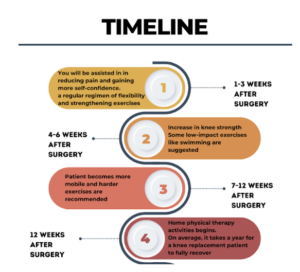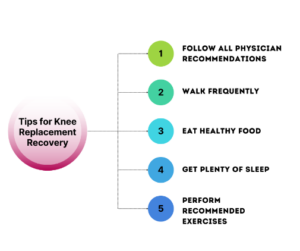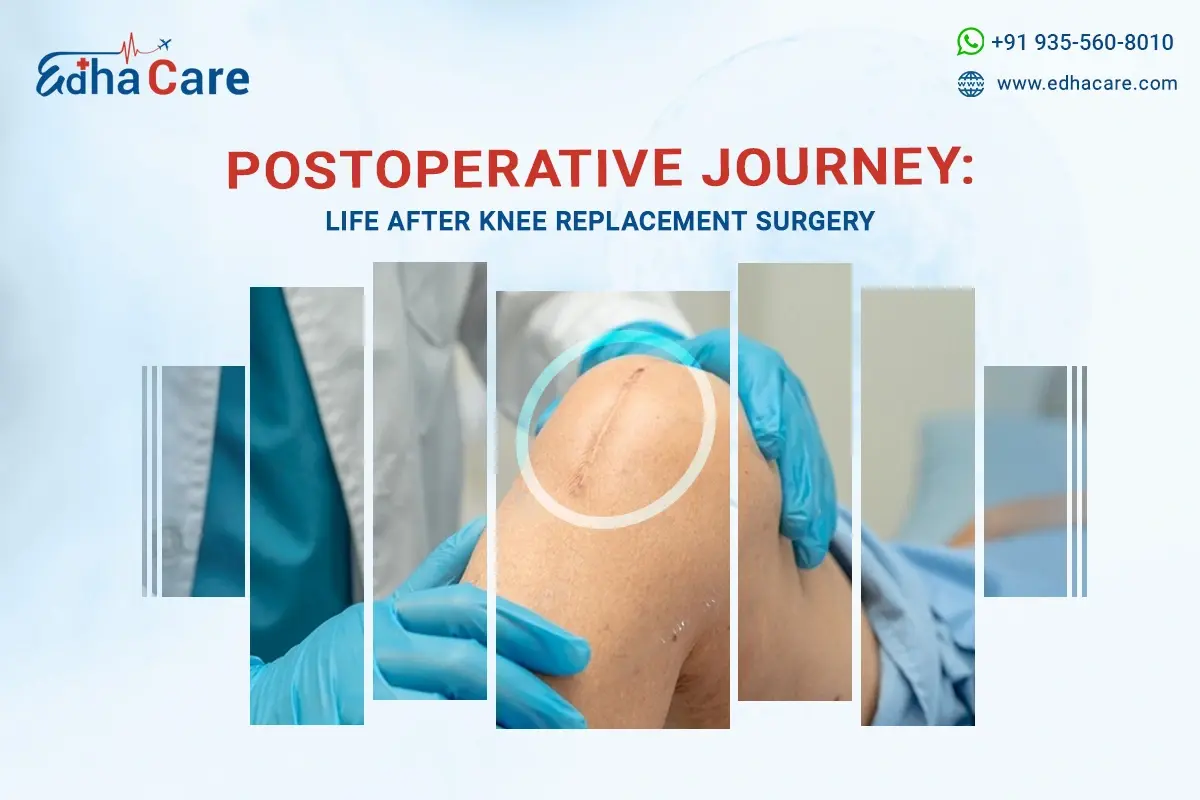A common orthopedic operation used to reduce pain and increase mobility in those with significant knee joint injury or degenerative disorders like osteoarthritis is knee replacement surgery, commonly known as knee arthroplasty. Patients who have knee replacement surgery can anticipate a thorough healing and rehabilitation procedure that takes place across numerous stages. This article will provide you with a general overview of what to anticipate following knee replacement surgery.
A patient’s recovery and rehabilitation plan is important to the overall success of knee replacement surgery. A recovery and rehabilitation plan has several advantages for the patient:
- Leave the hospital sooner
- Rebuild knee strength and range of motion faster
- Resume day-to-day life
- Avoid potential complications
Phases of Recovery Post Surgery
There are three phases that the patient undergoes after the knee replacement surgery. The phases include immediate post-surgery, early recovery, mid-to-long-term recovery, and continued physical therapy.
1. Post-Surgery Phase:
Following surgery, you will normally stay in the hospital for a few days for close observation and initial recovery. You will be given painkillers and antibiotics to avoid infections during this period.
A day or two following surgery, physical therapy typically starts. You will be led through easy exercises by a physical therapist to increase joint mobility, strengthen the muscles around the affected area, and regain the ability to bear weight on the operated limb.
2. Early Recovery Phase:
In the weeks immediately following surgery, pain and discomfort are frequent. In order to assist you deal with this discomfort, your doctor will prescribe painkillers.
You will gradually transition from not bearing any weight to partially bearing some weight on the operated leg with the use of a walker or crutches. Over time, you should be able to walk normally once more.
Physical therapy will continue to be an important part of your rehabilitation throughout routine sessions. As you try to improve your knee’s range of motion, strength, and general functionality, the workouts will get harder.
3. Mid-to-Long Term Recovery Phase:
Your outpatient physical therapy sessions will continue with a focus on strengthening, extending, and stabilizing your knee. As you advance, the frequency of these sessions can gradually reduce.
Requirement of Physical Therapy After Knee Replacement Surgery?
One of the crucial components of your recovery is physical therapy, sometimes known as rehabilitation. Physical therapists like myself assist you learn how to use your new knees and improve your body through a combination of exercises, education, and hands-on care.
Within the first week following surgery, physical therapists will begin seeing you on a regular basis. Physical therapy during the first three months following knee replacement surgery is crucial to your recovery. Many of the exercises you learn will also be helpful down the road to maintain your joint healthy.
Timeline after Surgery

1-3 weeks after surgery
Your physical therapist will concentrate on assisting you in reducing pain and gaining more self-confidence during the initial few weeks following knee replacement surgery.
Together with your physical therapist, you’ll start developing a regular regimen of flexibility and strengthening exercises. You’ll also practice bending your knees, standing up from a sitting position, and walking during this period.
During this phase of physical therapy, you should typically be able to fully straighten your knee, bend it at a 90-degree angle, and walk for at least 10 minutes straight.
4-6 weeks after surgery
You’ll notice an increase in knee strength after roughly a month. Additionally, as your knee discomfort and swelling subside, you’ll feel more at peace. You might use some assistive devices less or not at all depending on the kind of knee replacement you had and how well your recovery is progressing.
Your physical therapist may introduce additional low-impact exercises like swimming, cycling, or longer walks at this stage of physical therapy. The objective will be to increase your endurance so you may resume your regular daily activities.
7-12 weeks after surgery
You’ll probably find that two months after recuperation you’re a lot more mobile than you were in the first few weeks following surgery. You’ll perform harder exercises that improve your strength and mobility throughout this last round of physical therapy. This most certainly entails harder strength and aerobic exercises. Your physical therapist will also show you how to adjust any high-impact activities you want to do so you can continue to do them safely while you’re recovering.
12 weeks after surgery
Around 12 weeks after surgery, the number of in-person physical therapy sessions may start to reduce as you get stronger and feel more comfortable moving with your new knee. However, you’ll need to keep up your home physical therapy activities. Most of the time, people have personal household routines. These exercises will play a significant role in your ongoing recovery from a knee replacement. On average, it might take up to a year for a knee replacement patient to fully recover.
Tips to Speed up the Recovery after Knee Replacement Surgery
Here are a few tips that may be followed to accelerate the recovery after a patient undergoes knee replacement surgery.

1. Follow All Physician Recommendations
Some patients think they can defer the preparation of getting medications ahead of time. They may think they don’t need specific durable medical equipment as recommended by their physician.
2. Walk Frequently
Patients should get up once an hour to walk. It’s essential to take rest breaks to elevate your leg, but keep walking and get outdoors. All these activities will help in regaining knee flexibility and also help to walk again.
3. Eat Healthy Food
After the surgery, having an altered appetite is considered normal. This can last up to a week or two after having any surgery. However, it’s essential to focus on hydrating and eating a lot of protein, including eggs, milk, meat, and nuts which will help your recovery. Carbohydrates are appropriate too, but you must have the protein piece.
4. Get Plenty of Sleep
Be aware that sleeping isn’t going to be normal, but there are some things you can do to improve your rest. The knee is most comfortable when it’s slightly bent and elevated. Then, icing it before sleep and also taking some pain medication, preferably non-narcotic, before bed will help to a great extent. If the patient has sleep apnea, one must have a functional CPAP machine.
5. Perform Recommended Exercises
You want to regain the flexible movement of the knee as recommended by the physician or therapist. The most successful patients are generally those that understand that they do the exercises and the therapists are their coaches, cheerleaders, and monitors for those exercises.

